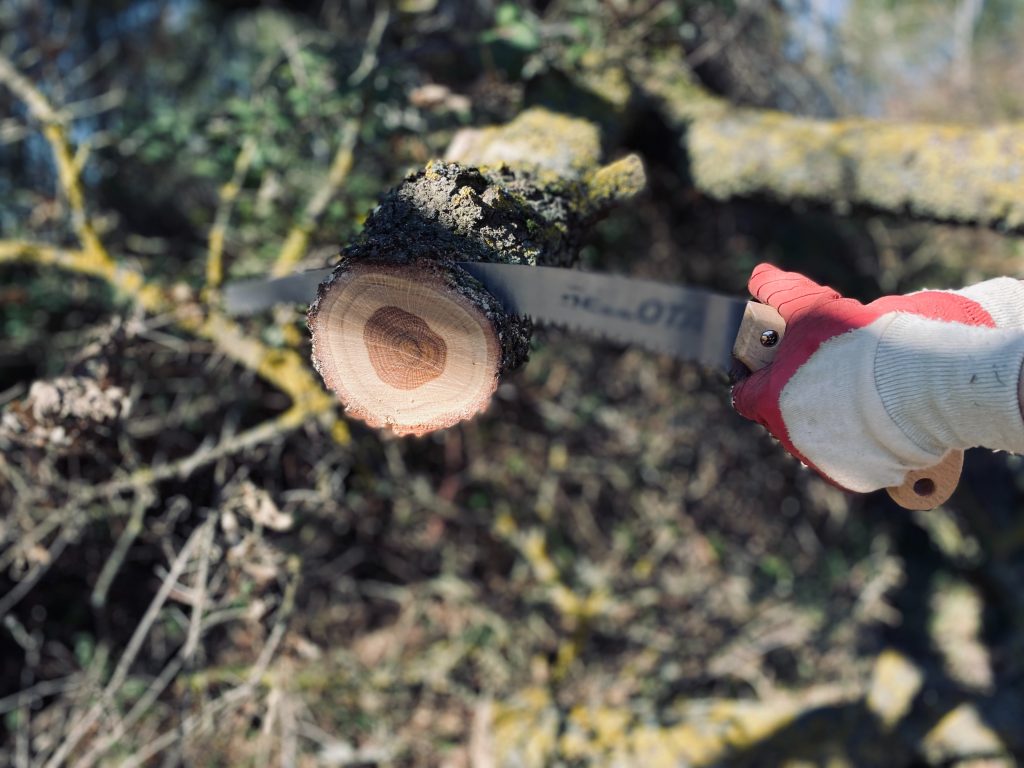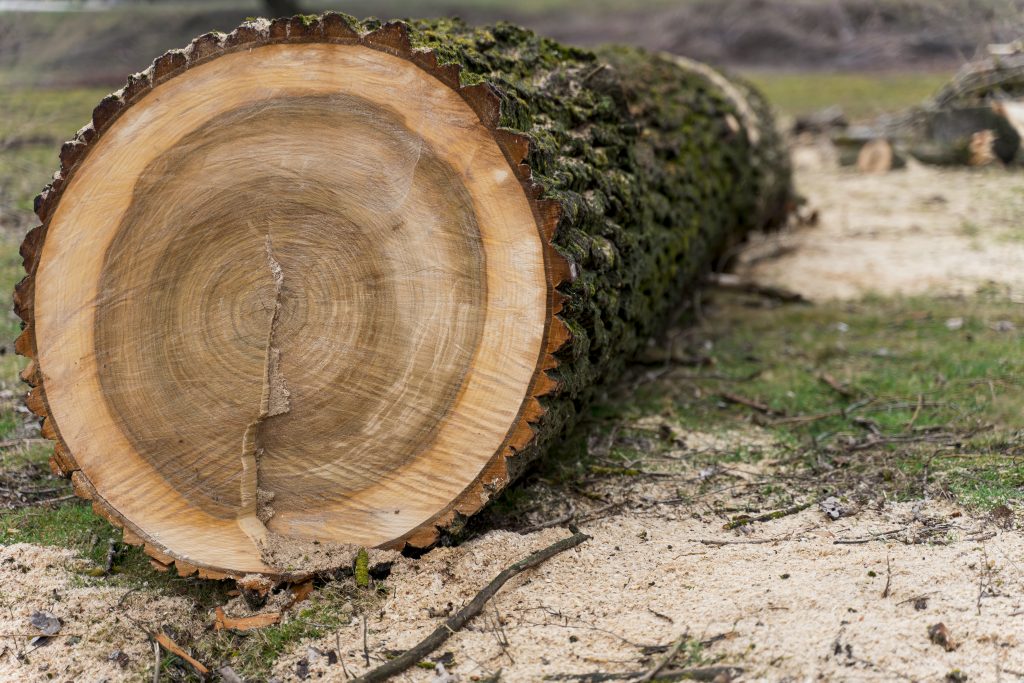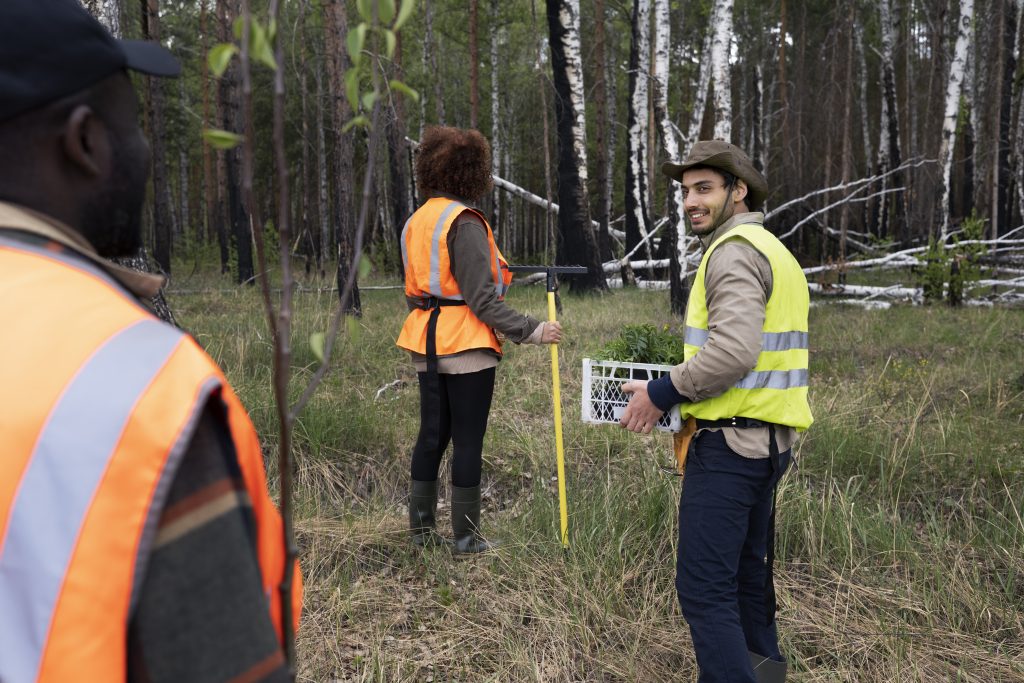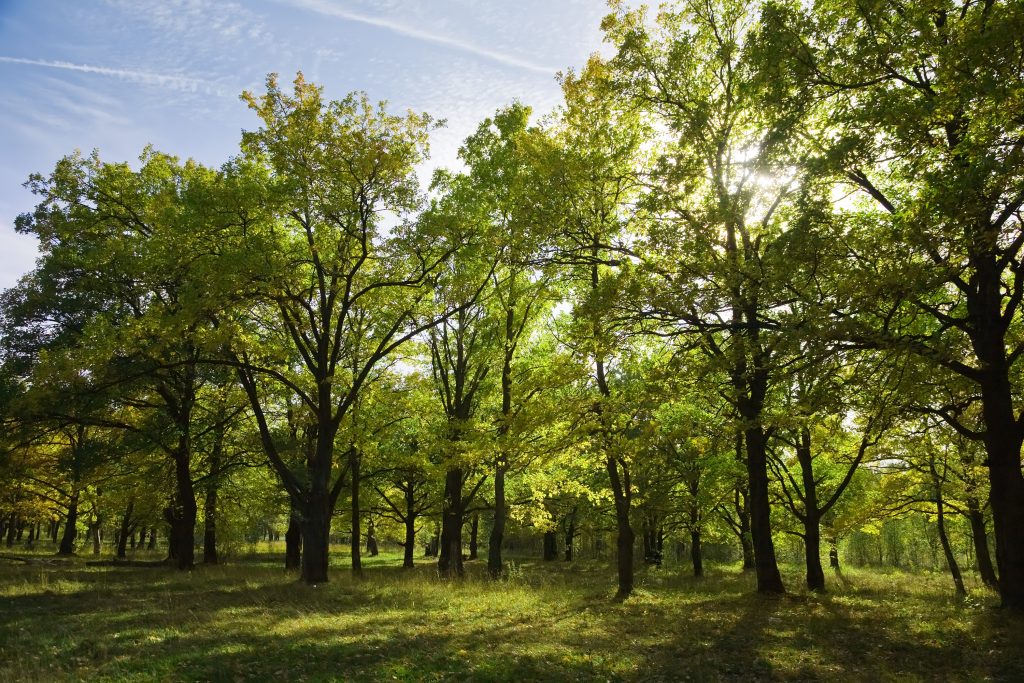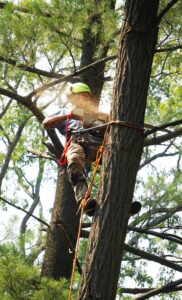BEST PRACTICES FOR MAINTAINING TREES NEAR SWIMMING POOLS
BEST PRACTICES FOR MAINTAINING TREES NEAR SWIMMING POOLS
Maintaining trees near swimming pools involves implementing a series of careful practices to ensure the safety, health, and aesthetics of both the trees and the pool area. Trees can provide shade, beauty, and a sense of nature to the pool environment, but they can also pose challenges in terms of debris, root intrusion, and potential hazards. Proper maintenance helps strike a balance between the benefits and challenges of having trees near swimming pools.

Key aspects of maintaining trees near swimming pools include:
- Tree Selection and Placement:
- Choosing tree species that have non-invasive root systems and produce minimal litter, such as leaves, flowers, and fruits.
- Selecting trees that are naturally suited to the local climate and soil conditions, ensuring they thrive without excessive care.
- Regularly pruning overhanging branches to prevent leaves and debris from falling into the pool.
- Trimming lower branches to create a clearance zone above the pool and deck, reducing the risk of leaves and twigs entering the water.
- Root Management:
- Installing root barriers or physical barriers to guide root growth away from the pool area and prevent damage to pool structures.
- Practicing proper irrigation techniques to encourage deep root growth, minimizing the likelihood of roots surfacing near the pool.
- Debris Control:
- Using pool covers or screens to prevent leaves, flowers, and other debris from entering the pool.
- Regularly cleaning the pool area to prevent clogging of drains and filters and to maintain a clean and inviting environment.
- Pest and Disease Management:
- Monitoring trees for signs of pests or diseases that could affect their health and the safety of the pool area.
- Employing integrated pest management practices that aim to minimize the use of chemicals while effectively managing pests.
- Watering Practices:
- Ensuring proper irrigation practices that prevent oversaturation of the soil around trees, which can lead to root health issues.
- Applying mulch around the base of trees to retain moisture, regulate soil temperature, and discourage weed growth.
- Professional Consultation:
- Seeking advice from certified arborists to assess the health of trees, identify potential risks, and recommend appropriate maintenance measures.
- Obtaining expert guidance when dealing with complex issues like root intrusion or diseases.
- Collaboration with Pool Professionals:
- Communicating with pool maintenance professionals to coordinate schedules and activities that minimize disruptions.
- Sharing information about tree care practices that could impact pool maintenance and vice versa.
Maintaining trees near swimming pools requires a holistic approach that considers both the well-being of the trees and the safety of pool users. By following these practices and collaborating with professionals, you can enjoy the benefits of having trees near your pool while ensuring a safe and visually pleasing outdoor space.
Importance of maintaining trees near swimming pools
Maintaining trees near swimming pools is important for several reasons, as it contributes to the overall safety, aesthetic appeal, and functionality of both the pool area and the surrounding environment. While trees provide numerous benefits, such as shade and visual beauty, proper maintenance is necessary to ensure a harmonious coexistence between trees and swimming pools. Here’s why maintaining trees near swimming pools is crucial:

- Shade and Comfort: Trees offer natural shade, creating a comfortable and enjoyable environment for pool users during hot and sunny days. Properly placed trees can reduce heat and glare, enhancing the overall swimming experience.
- Aesthetic Enhancement: Trees add natural beauty and character to the pool area, making it more visually appealing and inviting. Well-maintained trees can contribute to a tranquil and refreshing ambiance, enhancing the overall poolside atmosphere.
- Privacy and Screening: Trees can act as natural privacy screens, shielding the pool area from neighboring properties and creating a sense of seclusion. Properly maintained trees offer a sense of privacy without obstructing the view entirely.
- Environmental Benefits: Trees contribute to air purification by absorbing carbon dioxide and releasing oxygen, creating a healthier environment for pool users. They also help mitigate the heat island effect in urban areas, promoting a cooler microclimate around the pool.
- Erosion Control: Trees’ root systems help stabilize soil and prevent erosion, reducing the risk of sediment entering the pool. Properly managed tree roots contribute to soil structure and water drainage.
- Wildlife Habitat: Trees near swimming pools can create habitat and food sources for various wildlife species, enhancing biodiversity and connecting the pool area to the natural world.
- Property Value and Curb Appeal: A well-landscaped pool area with healthy trees can significantly enhance the property’s value and curb appeal. Trees contribute to a more inviting and well-maintained appearance, which can be attractive to potential buyers.
- Cooling Effect: Trees release moisture through a process called transpiration, which can create a cooling effect in the immediate area. This can make the pool area more comfortable for swimmers and reduce the need for excessive air conditioning.
- Psychological Well-Being: The presence of trees and greenery has been linked to reduced stress and improved mental well-being. A pool area surrounded by well-maintained trees can provide a calming and rejuvenating space.
- Ecological Harmony: Properly maintained trees demonstrate responsible stewardship of the environment by ensuring that trees and pools coexist in a sustainable manner. This promotes a harmonious balance between human needs and nature.
Balancing Aesthetic Benefits With Potential Challenges
Balancing the aesthetic benefits of having trees near swimming pools with potential challenges is a key consideration for creating a harmonious and functional outdoor space. While trees can enhance the beauty and ambiance of the pool area, they also bring along certain challenges that need to be addressed. Achieving this balance requires thoughtful planning, proper maintenance, and strategic decision-making. Here’s how to navigate this balance effectively:

- Tree Selection and Placement: Choose tree species that offer aesthetic appeal, such as vibrant foliage, flowers, or interesting bark, while also considering their potential challenges. Opt for trees with non-invasive root systems and minimal litter to minimize debris and root intrusion issues.
- Proper Pruning and Trimming: Regularly prune and trim trees to maintain their shape, prevent overgrowth, and reduce the risk of falling debris. Focus on preserving the trees’ natural beauty while ensuring that branches don’t hang over the pool area.
- Functional Aesthetics: Plan the placement of trees to enhance the overall design and aesthetic of the pool area, creating a visually pleasing and inviting space. Consider how the trees’ forms, colors, and textures complement the pool and landscape design.
- Debris Management: Implement strategies to control debris, such as using pool covers, screens, and regular cleaning. Address concerns about falling leaves, flowers, and other debris to maintain a clean and enjoyable pool environment.
- Regular Maintenance: Commit to consistent tree maintenance to prevent overgrowth, manage litter, and address any potential safety hazards. Regular care ensures that trees remain attractive and functional components of the pool area.
- Safety Measures: Prioritize safety by maintaining proper clearance between tree branches and the pool area to minimize the risk of debris falling into the water. Address potential hazards like weak branches that could pose dangers to swimmers.
- Collaboration with Professionals: Consult with arborists and landscape designers who can help you choose the right tree species and placement to achieve your aesthetic goals while managing challenges. Their expertise ensures a balanced and well-informed approach.
- Aesthetic Enhancement through Landscaping: Complement the trees with appropriate landscaping elements, such as flower beds, shrubs, and pathways, to enhance the overall visual appeal. Create a cohesive and pleasing landscape design that integrates trees seamlessly.
- Regular Assessments: Periodically reassess the trees’ health, growth patterns, and potential impact on the pool area to make informed decisions about maintenance and pruning.
- Flexibility and Adaptation: Be open to adjusting your approach as the trees grow and the pool area evolves over time. Adaptation ensures that the balance between aesthetics and challenges remains sustainable.
Striking the right balance between aesthetic benefits and potential challenges requires thoughtful planning, ongoing vigilance, and a willingness to adapt. With careful consideration and professional guidance, you can create a pool area that showcases the beauty of trees while ensuring a safe, clean, and enjoyable space for relaxation and recreation.
Choosing Appropriate Tree Species with Non-Invasive Roots
Choosing tree species with non-invasive roots is crucial when selecting trees to plant near structures, such as swimming pools, buildings, and sidewalks. Trees with invasive root systems can cause damage to foundations, underground utilities, and hardscape surfaces over time. Opting for non-invasive root systems helps prevent potential costly problems and ensures the health and safety of both the trees and the surrounding structures. Here’s why and how to choose appropriate tree species with non-invasive roots:
Importance of Non-Invasive Roots:
- Preventing Damage: Trees with invasive roots can crack foundations, lift pavements, and disrupt utility lines, leading to extensive and expensive repairs.
- Long-Term Stability: Non-invasive trees maintain their structural integrity, minimizing the risk of future instability caused by root growth.
- Aesthetic Appeal: Properly chosen non-invasive trees offer aesthetic benefits without compromising the safety and beauty of the landscape.
How to Choose Non-Invasive Tree Species:
- Research: Before selecting a tree species, research its root characteristics to ensure they are non-invasive.
- Consult Experts: Seek advice from certified arborists or local nursery professionals who have knowledge about suitable tree species for your area.
- Local Recommendations: Choose trees that are native or well-adapted to your region, as they are more likely to have less aggressive root systems.
- Root Structure: Look for tree species known for having fibrous, shallow roots that are less likely to cause structural damage.
- Avoid Known Problem Trees: Research and avoid tree species that are notorious for having invasive roots, such as silver maple or willow.
- Consider Mature Size: Understand the mature size of the tree, including the potential width of its root zone, to ensure it’s planted a safe distance from structures.
- Site Conditions: Consider soil type, drainage, and available space when choosing a tree species. Some soils might encourage more root growth.
- Space Planning: Determine the appropriate distance between the tree and structures based on the mature size of the tree’s root system.
- Species Selection: Examples of tree species with generally non-invasive root systems include Japanese maple, dogwood, redbud, and ornamental cherry.
- Professional Guidance: When in doubt, consult with professionals who have experience in landscaping and arboriculture to make informed decisions.
By carefully selecting tree species with non-invasive root systems, you can enjoy the benefits of having trees near structures without compromising the integrity and safety of your property. This proactive approach ensures a healthy coexistence between trees and the built environment.
About Murray, Utah
Murray is a city situated on the Wasatch Front in the core of Salt Lake Valley in the U.S. state of Utah. Named for territorial governor Eli Murray, it is the state's fourteenth largest city. According to the 2020 census, Murray had a population of 50,637. Murray shares borders with Taylorsville, Holladay, South Salt Lake and West Jordan, Utah. Once teeming with heavy industry, Murray's industrial sector now has little trace and has been replaced by major mercantile sectors. Known for its central location in Salt Lake County, Murray has been called the Hub of Salt Lake County. Unlike most of its neighboring communities, Murray operates its own police, fire, power, water, library, and parks and recreation departments and has its own school district. While maintaining many of its own services, Murray has one of the lowest city tax rates in the state.
Neighborhoods in Murray, Utah
Murray Oakes, Grant Park, Southwood Park, Murray Park, Murray Park Restrooms, Willow Pond Park, Neighborhood Veterinary Care
Things To Do in Murray, Utah
Bus Stops in Murray, Utah to Truco Services, Inc.
Bus Stop in Murray Central Station (Bay C) Murray, Utah to Truco Services, Inc.
Bus Stop in State St @ 4801 S Murray, Utah to Truco Services, Inc.
Bus Stop in Murray North Station Murray, Utah to Truco Services, Inc.
Bus Stop in State St @ 4949 S Murray, Utah to Truco Services, Inc.
Bus Stop in Murray Central Frontrunner/Trax Station Murray, Utah to Truco Services, Inc.
Bus Stop in Murray Blvd / Vine St (SB) Murray, Utah to Truco Services, Inc.
Bus Stop in State St @ 3925 S Murray, Utah to Truco Services, Inc.
Bus Stop in State St @ 4824 S Murray, Utah to Truco Services, Inc.
Bus Stop in State St @ 5223 S Murray, Utah to Truco Services, Inc.
Bus Stop in Murray Blvd / Allendale Dr (NB) Murray, Utah to Truco Services, Inc.
Bus Stop in Murray Blvd @ 5039 S Murray, Utah to Truco Services, Inc.
Bus Stop in State St @ 4721 S Murray, Utah to Truco Services, Inc.
Driving Directions in Murray, Utah to Truco Services, Inc.
Driving Directions from Woodruff Tree Trimming and Removal to 4640 Commerce Dr, Murray, UT 84107, USA
Driving Directions from Reliable Tree Care to 4640 Commerce Dr, Murray, UT 84107, USA
Driving Directions from Tree Pro-Tech to 4640 Commerce Dr, Murray, UT 84107, USA
Driving Directions from Prestige Tree And Landscape to 4640 Commerce Dr, Murray, UT 84107, USA
Driving Directions from Excellence Tree & Landscape to 4640 Commerce Dr, Murray, UT 84107, USA
Driving Directions from Amen Trees to 4640 Commerce Dr, Murray, UT 84107, USA
Driving Directions from Tim's Tree Care to 4640 Commerce Dr, Murray, UT 84107, USA
Driving Directions from Jordan Tree Service - Murray to 4640 Commerce Dr, Murray, UT 84107, USA
Driving Directions from Arbor Works to 4640 Commerce Dr, Murray, UT 84107, USA
Driving Directions from Diamond Tree Experts to 4640 Commerce Dr, Murray, UT 84107, USA
Driving Directions from Green Tree Arborist to 4640 Commerce Dr, Murray, UT 84107, USA
Driving Directions from TruCo Services to 4640 Commerce Dr, Murray, UT 84107, USA
Reviews for Truco Services, Inc. Murray, Utah
Emily Abercrombie
We had a great experience with TruCo! They were well priced, responsive and prompt. Michael was a pleasure to work with and gave us advice on which plants to put in where we took out our ugly old shrubs. I would highly recommend this company!!!
Michelle Turpin
TruCo Services gets 5 stars from us for customer service. We experienced a few issues with their services this last year and Rob Eccles in senior management, stepped in and immediately handled our issues. He was very committed to making sure they understood our expectations and would execute to make us happy.
Siobhan Billingsley
I work for a property management company and have the pleasure of working with Rob at a community in Sandy. He has been incredible to work with and always responds in a timely manner. He knows all the homeowners by name and address and is aware of all the "problem" areas when it comes to sprinklers. I never have to worry about following up with him because he always reaches out to provide me with an update. If you're looking to work with someone who takes pride in their job, is professional, and can solve the worst landscaping problems thrown your way, Rob is your guy. Thank you, Rob for all you do!
Jaime S.
We have used Truco at 2 of the complexes we manage, they have been great to work with. Good quality service, outstanding customer service with good communication. That's hard to find these days. I highly recommend them. Travis has been awesome to work with.
Jerusha Smart
We use TruCo for a majority of our properties and our home. While other landscaping companies we use come and go for various reasons like cost, communication issues, work performance, etc., TruCo is always consistent in price and work. Also, Rob is the best.

